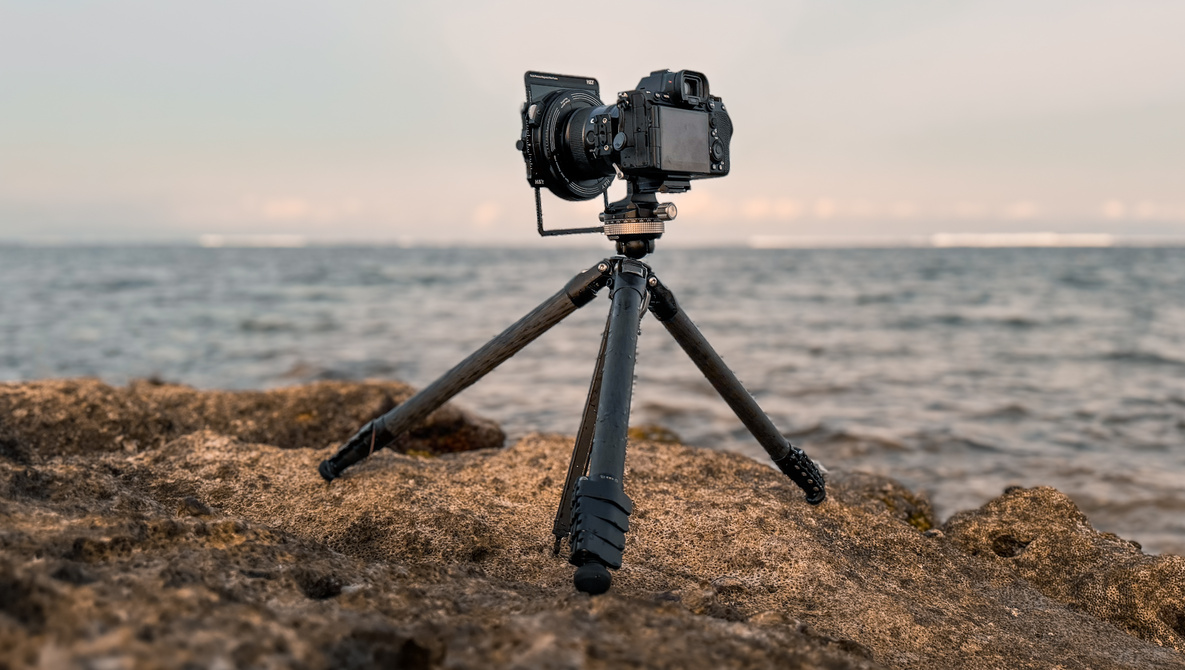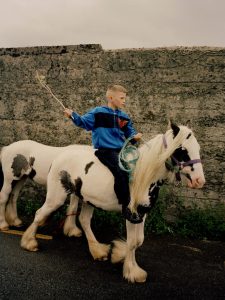
The perfect travel tripod does not exist because photographers have different ways of shooting when we travel. However, this versatile option from Leofoto might be the one that comes closest.
Having the right tools that work for you is one of the most important factors for any photography workflow. Nowadays, the tripods we bring when traveling don’t just have to be light and sturdy; they also have to have the right combination of capabilities that match the workflow. Travel tripods have emerged from so many brands in recent years because the needs of photographers have changed as camera gear progressively got lighter. There are dozens of popular features found on relatively new travel tripods on the market, but the combination seen on this Leofoto LY-265CF, also known as the Leofoto Mr. Y, just might be the one that makes shooting the most convenient.
The Leofoto Mr. Y Tripod
The LY-265CF is a 5-section carbon fiber tripod that comes in a compact folded length of 17.1 inches (435 mm) and a maximum extended height of 62.2 inches (1,580 mm). The standing height with all sections collapsed is roughly 15.5 inches; however, it can go much lower after a few adjustments.
By setting the leg angles to the widest option (82 degrees) and removing 3/4 of the length of the center column, the minimum working height can go as low as 4 inches (120 mm) from the ground to the base of the camera. This allows for very low-angle shooting that can come in handy when the shot calls for it. This tripod weighs 1.25 kg but comfortably carries 7 kg of camera gear, which is realistically a lot for most mirrorless cameras and even some DSLR combinations.

Each leg is made up of 5 sections of carbon fiber rods. The thickest rod on the uppermost section is 26 mm thick, while the smallest and most distal section is 11.55 mm thick. Each of the sections is connected and controlled by black aluminum locking levers that are curved to follow the contour of the cylindrical rods. On the topmost section is an angle lock where the legs meet the central joint of the tripod. This angle lock allows the user to switch from the standard 23-degree leg angles to 42, 62, and 82 degrees if needed.

On one side of the central joint is a 1/4-inch screw thread that serves as an accessory port for friction arms and other peripheral accessories that one might want to use. On the other side is a lever oriented vertically, which controls the lock of the center column. Unlike traditional tripods, the lock mechanism that holds the center column is significantly longer, which should provide more stability, especially when shooting with the long center column extended.

The Unusual Ball Head
Above the central joint is a large twist lock that spans the diameter of the head and central joint assembly. This lock controls the friction on an inverted ball-type head that holds the camera. Typically, ball heads have the ball joint connected to the mounting platform on top. On this tripod, the ball joint is stationary and connected to the center column. There is a round inverted bowl that envelops half of the surface of the ball, allowing movement. There are also two notches on the inverted bowl, which allow for 90-degree tilts in any direction, depending on how the top platform is oriented.

If the inverted bowl and the top Arca-Swiss-type quick-release platform are maximally tilted to one side, it reveals a hex screw that can be loosened to release the distal 3/4 of the center column, as described above. Above the inverted bowl is the quick-release platform that connects to an Arca-Swiss-type camera plate with two knobs on each side. The larger knob controls the mounting of the plate or whatever mounting tool (rotating bracket, L-bracket, cage) is used on the camera, while the smaller knob allows this top platform to pan 360 degrees, making the head more flexible for tilting to different angles despite the limitations of the ball movement.

This pan action also makes up for the fact that the head itself does not have the usual panning mechanism, wherein the entire head rotates. At the same time, it makes it easier to maintain a level panorama since the ball joint remains stationary. It is also a huge bonus that inside the carrying bag is an included replacement center column that allows the user to mount other standard tripod heads and use them with the LY-265CF.
Application and User Experience
At first glance, this tripod is not as eye-catching as many other travel tripods that have become popular in the past couple of years. However, it also comes in pink and green if you prefer those bright colors. Despite that, the combination of features and compatibility of this tripod puts it above many others. In the past, the goal of a travel tripod was to be easy to bring around, even if some functionality was compromised. However, with the abundance of available options, finding the best tripod for yourself means finding the one that allows you to do everything you want to do with a small tripod—or rather, with a tripod small enough for you that doesn’t compromise stability and necessary camera height.

Overall, despite the portable form and weighing just 1.25 kg, it offers sufficient stability in ordinary outdoor situations. It can withstand a bit of wind and being submerged in flowing water, though a larger and heavier tripod would obviously be a wiser choice in such situations. It is also important to mention that the center column does feel more stable when extended (ideally not fully) because of the larger surface area held by the elongated center column lock mechanism.

Carrying the tripod is definitely convenient, considering the overall folded length and thickness, which allow it to fit right into the side pockets of most travel backpacks and possibly even inside the main compartment if there is extra space.

Among all the features, the fact that the center column’s length can be significantly reduced to achieve a very low shooting angle makes it the most convenient as a portable option. While the tool to remove the said section is conveniently stowed at the distal end of the center column, it does take a bit of time to unscrew and release. In my opinion, if there’s something that could perfect the functionality of this tripod, it would be if the process of reducing the center column could be done faster and with simpler movement.

All in all, the Leofoto Mr.Y LY-265CF offers portability, superb build quality, and a really good user experience. As someone who would never travel without a tripod, this is a good option, regardless of whether I have long exposure shots planned or as a just-in-case measure. If the trip does not involve very windy situations or shooting while submerged in rough water—basically anything that a travel tripod should be able to withstand—this will be (as of writing this) my top-of-mind option.
What I Liked
- Portable yet stable and sturdy
- Superb build quality
- Center column length can be reduced for low angles
- Compact inverted ball head does not limit range of motion
What Can Be Improved
- Reducing the center column requires a tool and hidden screw
- More color options




